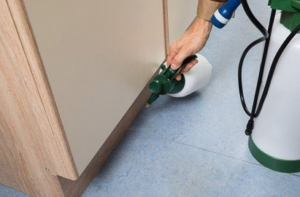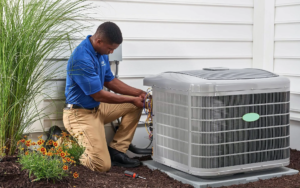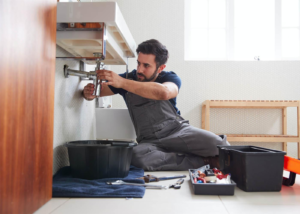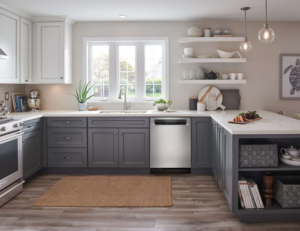Pest Control Trophy Club TX reduces pests in agricultural, food processing, and residential settings. It may involve physical or mechanical, biological, or chemical controls.
Natural forces such as climate, natural enemies, and food, water, and shelter availability affect pest populations. These factors can also help predict when pest control is needed.

When pests invade a space, they often cause structural damage and health concerns. The best way to avoid these problems is to practice preventive measures that discourage pests from finding a desirable environment. This can be done through vigilance, hygiene practices, and professional pest control interventions.
Understanding a pest’s life cycle can help you determine if and when to intervene. For example, the presence of certain pests is often triggered by weather conditions. Rain, freezing temperatures, and droughts all affect plant-eating pest populations by affecting the growth of their host plants.
The climate also affects pest populations directly by killing or suppressing them. For instance, many insect pests are killed by rain or frost, while cold temperatures can suppress the reproduction of a pest that is primarily a seed predator.
In indoor spaces, prevention involves identifying the conditions that attract pests and eliminating them. This can be done by sweeping, vacuuming and wiping down surfaces to remove sticky residues that can attract pests. Storing food in sealed containers and regularly taking out the trash can also deter pests.
Outdoors, fixing leaking pipes and draining standing water can help prevent pests like mosquitoes and termites from developing in damp environments. Also, using wood mulch instead of hay or straw can discourage beetles and other pests that thrive in woody areas.
Indoors, reducing clutter can also help. Clutter provides places for pests to hide and breed. This can be done by vaccuming and wiping down seldom used cabinets and storage spaces. Thoroughly cleaning storage and rarely used rooms several times a year and using screens on windows can also make your home less attractive to pests.
Biological controls, such as parasites, predators and pathogens, can be used to manage pest populations in conjunction with preventive methods. This is a form of integrated pest management that uses natural enemies to reduce the numbers of harmful organisms that may be damaging artifacts. This may be achieved by releasing more of the pest’s enemies into an area, or by using biologically altered organisms, such as sterile males and pheromones.
Pest Identification
Identifying pests can help prevent their spread and reduce damage. In addition, understanding the biology of a specific pest, such as their feeding habits or environment and harborage requirements, will help you map out an IPM plan to eliminate them from your property without harmful chemicals. This information will also help you better protect your collections.
The first step in identifying a pest is to locate the source of your problem. This may involve inspecting a home or business to find where the pests are entering and how they are getting in. Examine windows, doorways, vents and any cracks or crevices for signs of infestation. Be sure to inspect basements, attics, and crawl spaces as well.
Next, look at the types of plants the pests are attacking. This will narrow down the search by ruling out pests that only consume certain types of plants or by highlighting ones that favor particular crops. This will allow you to focus your pest control efforts on the most susceptible crops.
Finally, be on the lookout for the pest itself. Many pests will leave a distinctive damage mark on their hosts or may produce a characteristic odor, sound, or behavior that can help you to identify them. If you cannot identify a pest, consult with an expert or attend a pest identification workshop.
If you can’t get an accurate pest ID, you can always contact a professional pest control company to help. Professionals have the knowledge and equipment to quickly identify the type of pest you’re dealing with so they can plan an appropriate and effective treatment that eliminates them from your space while protecting your collection items, personal property and health.
Pests can be insects, mammals or birds. Insects can include rodents such as rats and mice, cockroaches, ants, beetles, or fruit flies. Mammals and birds are usually found in the fields and around homes, but some species are sluggish flyers that will move into houses to overwinter or find warmth during cold weather. These are called nuisance pests. These pests are often managed using sanitary practices and dehumidification in homes, as well as vacuuming and spraying with insecticides.
Pesticides
A pesticide is any material of plant, animal or synthetic origin used to control, prevent, kill, suppress or repel pests (insects, weeds, disease organisms or rodents) that threaten man’s health, comfort or livelihood. It is important to remember that pesticides are just one tool in the pest management toolbox and should be used only when necessary and always with caution.
Before using any pesticide, a thorough inspection of the pest problem should be made to determine its cause. Many problems that appear to be caused by insects or other pests are actually due to cultural, physical, environmental or soil factors. Before applying any pesticide, it is a good idea to consult the local UC Cooperative Extension office or other knowledgeable experts for assistance in identification and recommendations for appropriate controls.
Pesticides are available in liquid, solid and gaseous forms. They are formulated (prepared) to be used in various ways, such as space sprays, surface sprays, termite treatments and baits. Liquid formulations include suspensions (flowables), solutions, emulsifiable concentrates and microencapsulated suspensions. Solid formulations include powders, granulars and soluble granules. The most common types of pesticides are insecticides, herbicides and fungicides.
All pesticides contain active ingredients. In addition to the active ingredients, most pesticide products also contain intentionally added inert ingredients. These ingredients are used to help dilute and disperse the active ingredients, add stability, improve handling and storage, or reduce toxicity.
Insecticides kill pests by interfering with a specific chemical pathway. This makes it less likely that resistance will develop to the pesticides compared to insecticides with more general modes of action, such as disruption of the nervous system or inhibition of protein formation.
When selecting a pesticide to use, make sure the product is labeled for the specific pest and location. Read and follow all pesticide labels carefully, especially the safety instructions. It is dangerous, and illegal, to apply pesticides incorrectly or without following the proper safety instructions.
Wear all required protective equipment when applying any pesticides. After applying any pesticides, wash all clothing and tools in hot soapy water immediately after use. Do not reuse contaminated clothing or tools in a different area, and dispose of contaminated materials according to the label instructions.
Monitoring
The identification of a pest is the first step in developing an effective pest control strategy. This includes determining whether the pest is a continuous pest (such as rats or roaches), sporadic, or a potential pest (such as a weed). Once the type of pest has been determined, prevention, suppression and/or eradication measures can be implemented.
For instance, to prevent pests such as rodents and roaches from getting into homes or businesses, homeowners should keep grass cut short, eliminate weeds, and store food in refrigerators. Businesses should keep trashcans tightly closed and store and dispose of waste correctly. Some pests can also be controlled by using biological controls, such as ladybugs that eat aphids and green lacewings that eat caterpillars; ground beetles that eat slugs; and bats that eat mosquitoes.
Another method to prevent pests is through monitoring. This involves a trained pest professional regularly searching for signs of pests on and around property. This can include examining gnaw marks and droppings on or near building materials. It also includes inspecting areas that have been affected by pests, such as damage to wood, plaster or metal.
When a pest infestation occurs, it is important to act quickly. This can help protect the health and safety of people, animals and plants and reduce economic losses. For example, pests can spread foodborne diseases that threaten public health. If these disease-causing organisms contaminate food, they can cause serious illness and even death. Pests can also damage a business’ reputation and lead to costly sanitation regulatory fines and lawsuits.
Threshold levels for many pests have been set, based on esthetic or health considerations, to determine when action is required. For instance, a few flies and spiders in the home does not warrant any action, but a colony of termites may necessitate the use of pesticides.
Monitoring can also be done by using traps, pheromones, or a combination of these methods. These tools can be used to determine pest population levels, and can help to identify the conditions that favor pest growth. Incorporating this information into a pest control plan can help minimize the amount of chemicals used.


